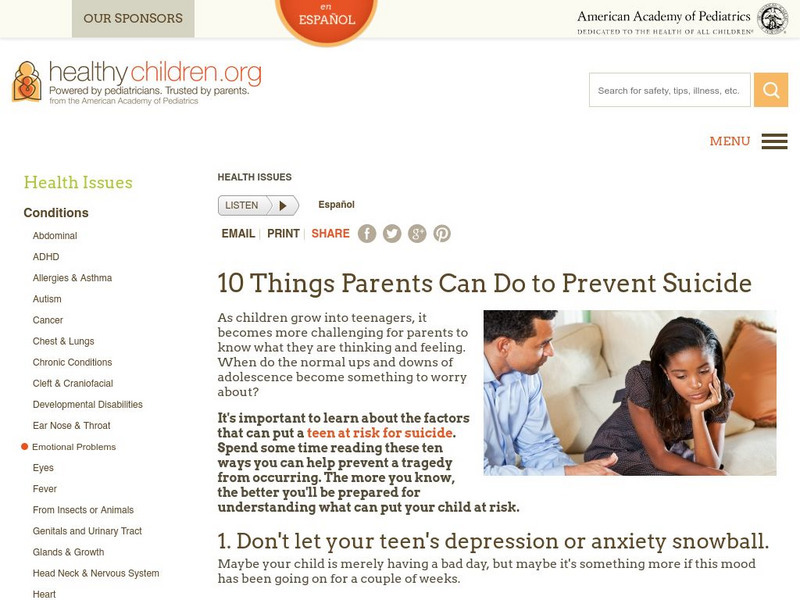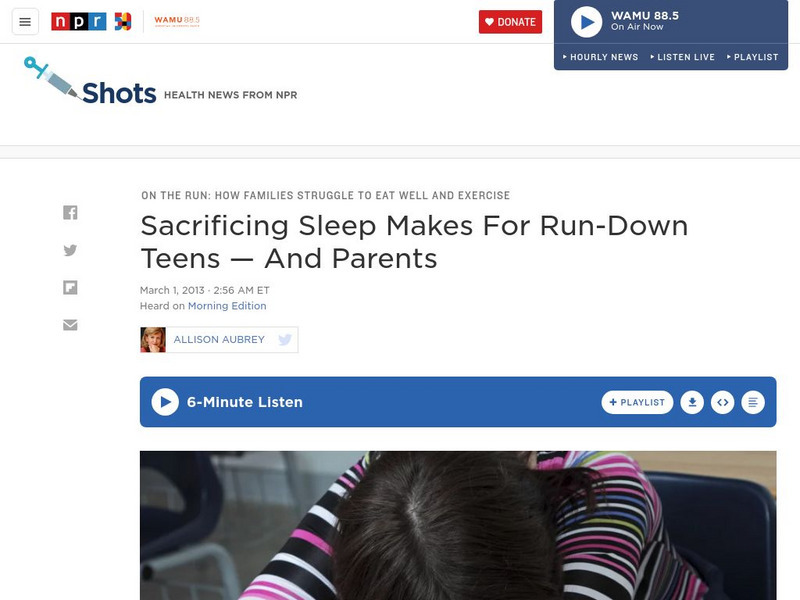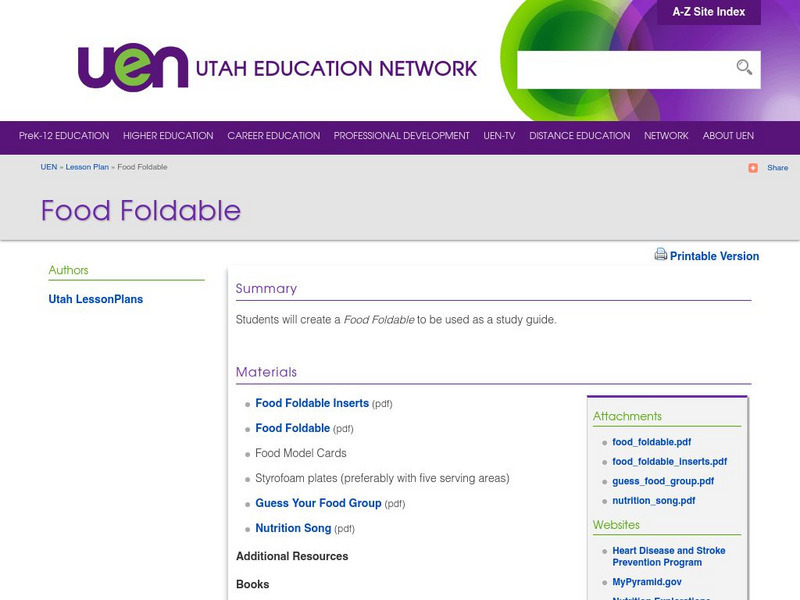National Institutes of Health
Understanding Alcohol: Information About Alcohol
Includes several sections, with charts and facts with information on alcohol use, alcoholism, youth drinking, and misconceptions and myths about alcohol and drinking. Though a "Teacher's guide," this website is suitable for students...
US National Library of Medicine
Medline Plus: Pernicious Anemia
This site contains details of pernicious anemia, alternative names, definition, causes and risks, prevention, symptoms, signs and tests, treatment, and complications. It also includes a picture of pernicious anemic red blood cells.
US National Library of Medicine
Medline Plus: Wbc Count
An overview of a white blood cell test. How the test is performed, how to prepare for the test, risks involved, and the results of the tests are discussed.
US National Library of Medicine
Medline Plus: Ivp (Intra Venous Pyelogram)
An intravenous pyelogram, or IVP, is an x-ray of the kidney and bladder. This tutorial explains the procedure and the benefits and risks.
US National Library of Medicine
Medline Plus: Shoulder Arthroscopy
To diagnose and treat a shoulder injury, a doctor may recommend shoulder arthroscopy. This will allow the doctor to see inside the shoulder and clearly identify the problem. The benefits and risks of arthroscopy are discussed in this...
University of Texas Libraries
University of Texas: Ray and the Sunbeatables
The University of Texas MD Anderson Cancer Center created and developed Ray and the Sunbeatables: A Sun Safety Curriculum. The evidence-based curriculum educates children, parents and teachers about sun protection and promotes sun safety...
National Institutes of Health
Nih: Aim for a Health Weight
This brief but informative site discusses the role of body mass index and waist circumference in determining your risk of disease and death.
Other
Bupa: Hepatitis
This site from the British United Provident Association contains great information on the disease known as hepatitis. Provides info on each of the different kinds of hepatitis along with the causes and risks of the disease.
Other
American Academy of Pediatrics: 10 Things Parents Can Do to Prevent Suicide
The American Academy of Pediatrics offers information about risk factors that can put a teen at risk of suicide.
NPR: National Public Radio
Npr: Sacrificing Sleep Makes for Run Down Teens
Teens who don't get enough sleep may suffer from health problems. Learn about the risks of missing sleep and learn how to get the sleep you need.
Texas Heart Institute
Texas Heart Institute: Heart Information Center: Nutrition
One-page article with a complete overview of the importance of good nutrition in reducing your risk for health problems, including facts on nutrients, vitamins, body mass, snacking tips, and ChooseMyPlate.
WebMD
Web Md: Anorexia Nervosa
An overview of anorexia, including causes and risk factors, symptoms, stages of the disease, treatments, and more.
WebMD
Web Md: Alcohol Abuse and Dependence
This lengthy article addresses several topics associated with alcohol use, such as alcohol abuse, health problems, and alcohol treatment programs. Navigate the pages of this article through the "topic contents" to the right of the text.
NASA
Nasa: Los Misterios Del Cancer
One of the greatest dangers of space travel is the development of cancer through exposure to radiation in space. Scientists discuss studies of the development of cancer and its relation to this particular type of radiation.
Utah Education Network
Uen: Food Foldable
During this lesson, students will listen to a poem about a balanced diet and create a foldable. In each section of the foldable, students will include information about a different food group and will use this creation as a study guide.
National Museum of Science and Industry (UK)
Ingenious: Do We Need the Telephone?
The telephone has been a marvelous technological invention. Its successes, failures, and consequences are looked at in this website.
Other
John Hopkins: Researcher Dispels Myth of Dioxins and Water Bottles
This resource provides information about dioxins, water bottles, and their effects on humans.
TeachEngineering
Teach Engineering: Who's Hitchhiking in Your Food?
How can you tell if harmful bacteria are growing in your food? Students learn to culture bacteria in order to examine ground meat and bagged salad samples, looking for common foodborne bacteria such as E. coli or salmonella. After 2-7...
PBS
Pbs Learning Media: Peanut Allergy Background Information
Learn background information about food allergies in this guide from Arthur: "Binky Goes Nuts."
PBS
Pbs Learning Media: Peanut Allergy Tips for Grown Ups
These tips provide information on keeping children with food allergies safe. Learn more with this guide from Arthur: "Binky Goes Nuts."
PBS
Pbs Learning Media: Peanut Allergy Tips for Kids
Help kids learn safe ways to deal with food allergies with this guide from Arthur: "Binky Goes Nuts."
PBS
Pbs Learning Media: Binky Goes Nuts
Teach children how to manage a peanut allergy with this lesson plan from Arthur: "Binky Goes Nuts." Includes resources in Spanish.
PBS
Pbs Learning Media: Asthma Triggers
Buster knows that some things will start up his asthma. They are called triggers. Explore what triggers effect Buster in this activity from Arthur "Buster's Breathless."
PBS
Pbs Learning Media: Peanut Allergy Quiz
Test your children's knowledge of peanut allergies in this quiz from Arthur: "Binky Goes Nuts."
Other popular searches
- Human Health Risks
- Cigarette Smoking Health Risks
- Reduce Health Risks
- Substance Abuse Health Risks
- Health Risks Powerpoint
- Health Risks With Obesity
- Overweight Health Risks
- Obesity and Health Risks
- Health Risks From Pets














